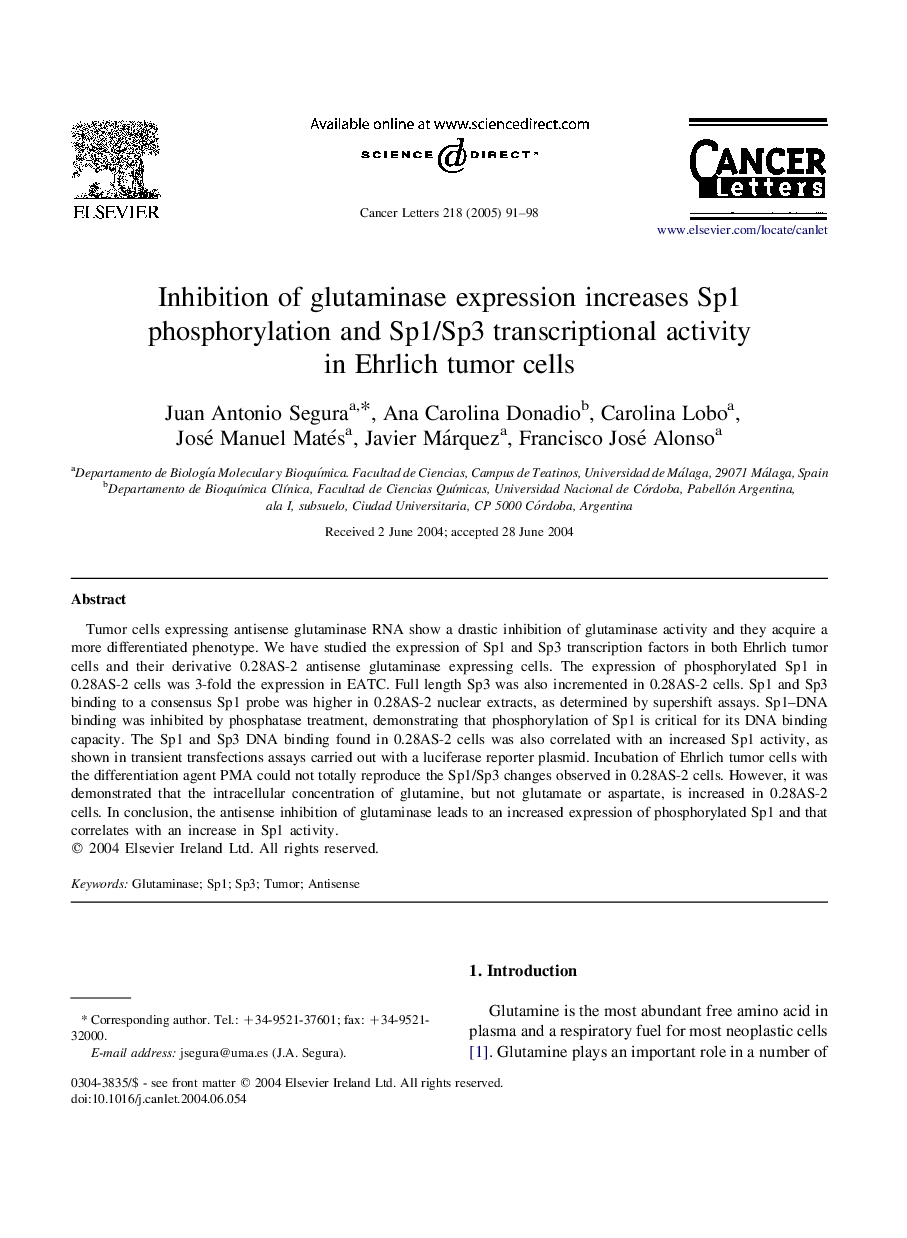| Article ID | Journal | Published Year | Pages | File Type |
|---|---|---|---|---|
| 10900589 | Cancer Letters | 2005 | 8 Pages |
Abstract
Tumor cells expressing antisense glutaminase RNA show a drastic inhibition of glutaminase activity and they acquire a more differentiated phenotype. We have studied the expression of Sp1 and Sp3 transcription factors in both Ehrlich tumor cells and their derivative 0.28AS-2 antisense glutaminase expressing cells. The expression of phosphorylated Sp1 in 0.28AS-2 cells was 3-fold the expression in EATC. Full length Sp3 was also incremented in 0.28AS-2 cells. Sp1 and Sp3 binding to a consensus Sp1 probe was higher in 0.28AS-2 nuclear extracts, as determined by supershift assays. Sp1-DNA binding was inhibited by phosphatase treatment, demonstrating that phosphorylation of Sp1 is critical for its DNA binding capacity. The Sp1 and Sp3 DNA binding found in 0.28AS-2 cells was also correlated with an increased Sp1 activity, as shown in transient transfections assays carried out with a luciferase reporter plasmid. Incubation of Ehrlich tumor cells with the differentiation agent PMA could not totally reproduce the Sp1/Sp3 changes observed in 0.28AS-2 cells. However, it was demonstrated that the intracellular concentration of glutamine, but not glutamate or aspartate, is increased in 0.28AS-2 cells. In conclusion, the antisense inhibition of glutaminase leads to an increased expression of phosphorylated Sp1 and that correlates with an increase in Sp1 activity.
Keywords
Related Topics
Life Sciences
Biochemistry, Genetics and Molecular Biology
Cancer Research
Authors
Juan Antonio Segura, Ana Carolina Donadio, Carolina Lobo, José Manuel Matés, Javier Márquez, Francisco José Alonso,
